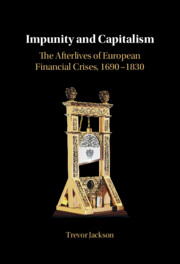Introduction
Published online by Cambridge University Press: 08 September 2022
Summary
There was an international financial crisis in 1825, centered on the London money market. Nine sovereign governments defaulted on their debts, more than 100 banks failed in England and Wales, and the British economy was thrown into recession. That crisis also featured speculation, new financial innovations, and large-scale mismanagement. Nobody was prosecuted for anything, nor was there any indication or suggestion that anybody should have been. The idea of prosecuting the entire financial community would have been unintelligible and unthinkable. But that was new. Throughout the long eighteenth century, crisis after crisis had been followed by efforts at public accountability, taking various forms from forensic accounting to prosecution before public tribunals. Demands for accountability never quite went away, but the 1825 crisis marked a shift. It was the first financial crisis that was not the fault of anybody in particular. How did certain forms of economic endeavor come to be understood as realms of impunity, where private actions might have disastrous public consequences and yet be exempted from public accountability? This book shows how the legal, cultural, and political order of financial capitalism moved from the world of the chambre de justice to the world of the nineteenth century and after, where financial crises and economic disasters were understood as inevitable outbursts of irrationality or as unpredictable accidents. Somehow, between about 1690 and about 1830, financial crises stopped being crimes and became natural disasters.
- Type
- Chapter
- Information
- Impunity and CapitalismThe Afterlives of European Financial Crises, 1690–1830, pp. 1 - 24Publisher: Cambridge University PressPrint publication year: 2022

